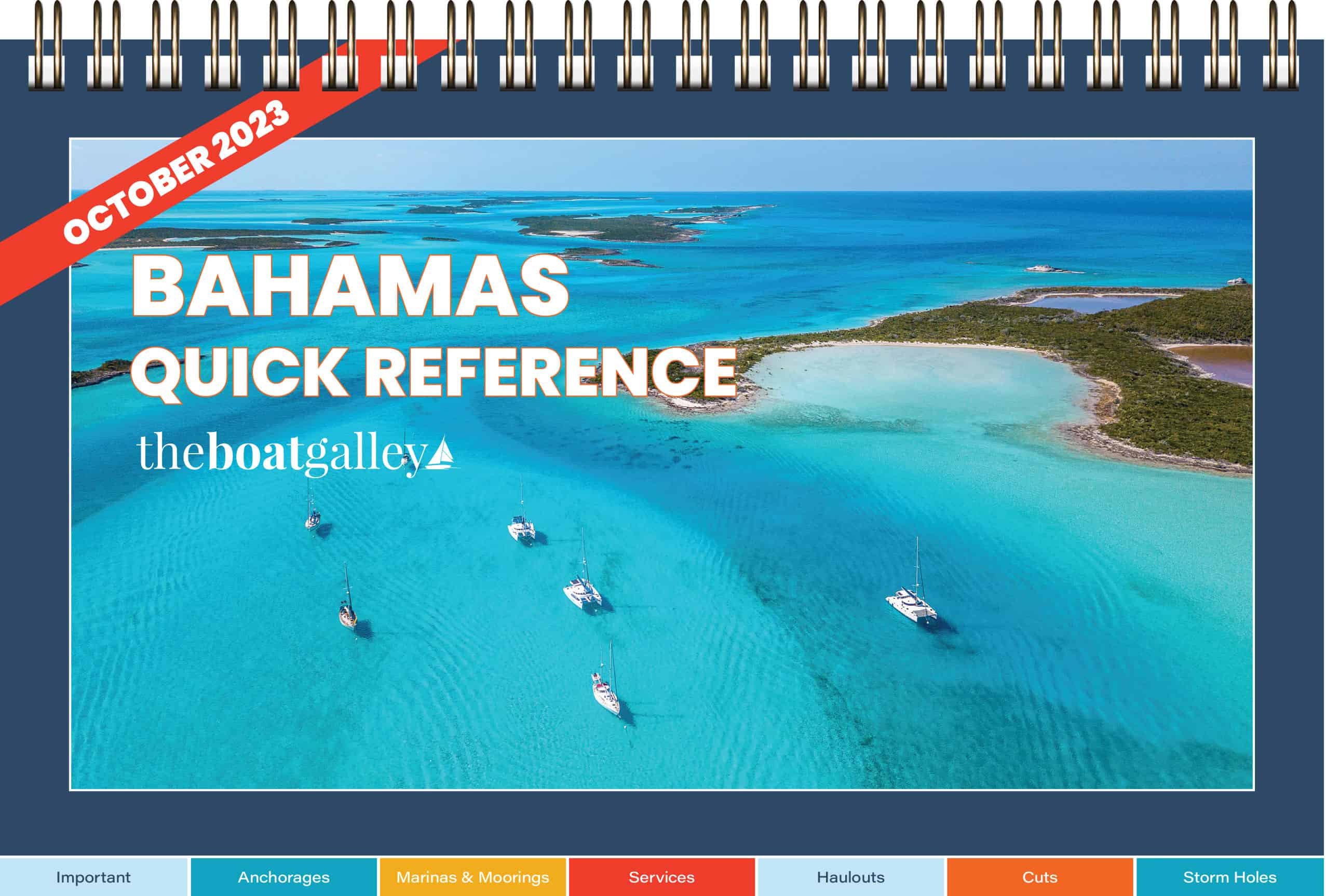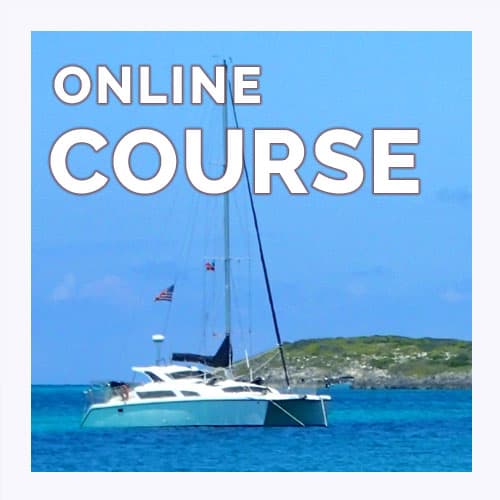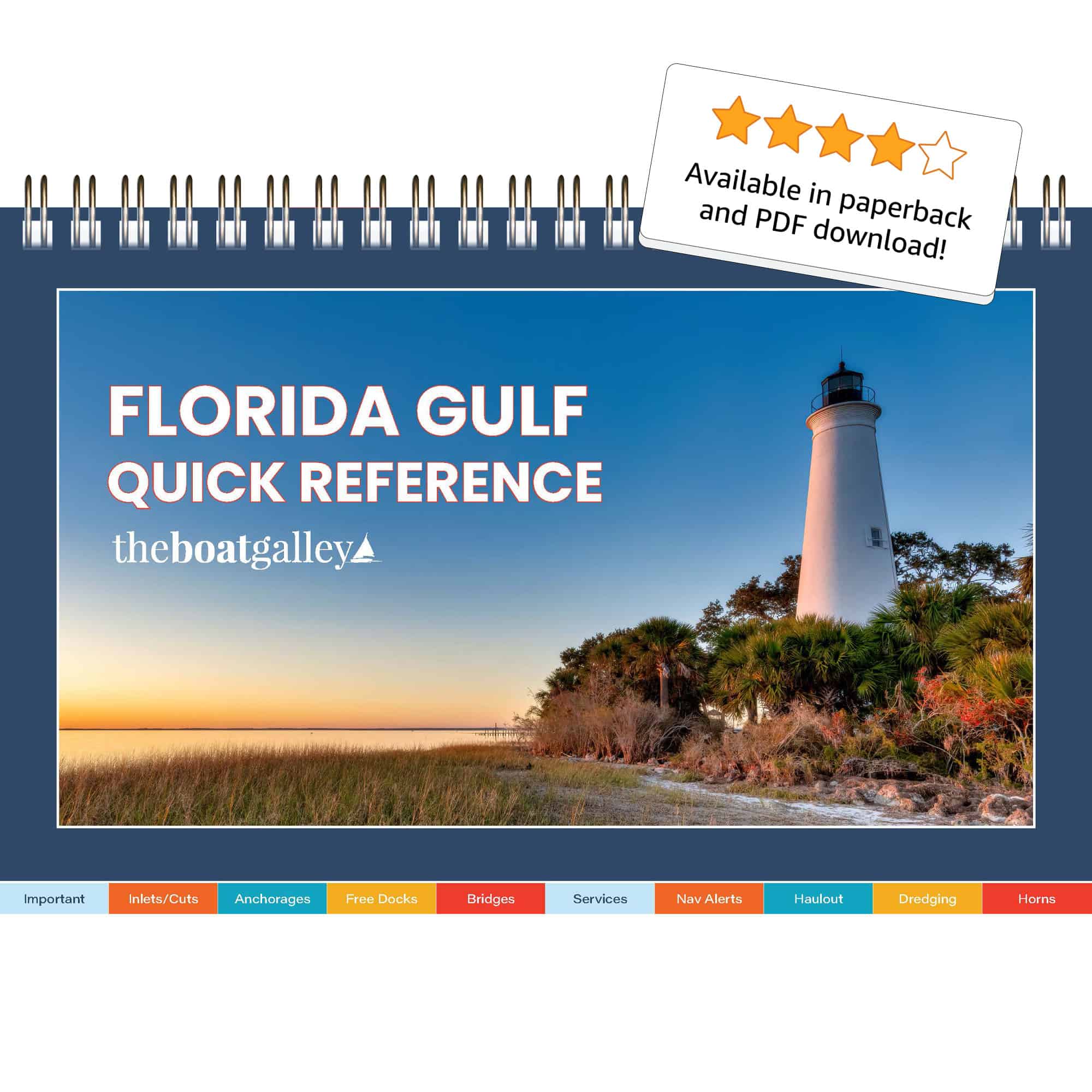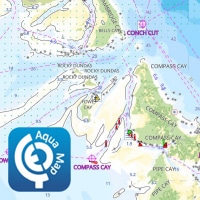If you live on a boat, how do you get help in an emergency? The answer depends a little on where you are and on what type of emergency it is. But here are some general guidelines:
Ways to Call For Help
Do you know each of these methods for getting helping in an emergency?
Call Mayday on VHF 16
This will get help in almost all parts of the world, whether underway, anchored, in a marina, aground, or anything else. HOWEVER, Mayday is only to be used for a life-threatening situation.
Although it’s an emergency situation, try to talk slowly and calmly so that listeners can understand you. Give your boat name, location, and type of problem. Range is typically 12 – 20 miles, although up to 75 miles is possible if atmospheric conditions are just right.
And if you feel uncomfortable using your VHF, check out our course – VHF Radios: Everything You Need to Know.
Press the DISTRESS button on your VHF
This automatically transmits your boat name and position. But you must have previously programmed in your MMSI number and connected your VHF to your GPS/chartplotter if it does not have internal GPS. Range: typically 20 miles or further, particularly when being picked up by a Coast Guard station.
Call PAN-PAN on VHF 16
This method exists for serious but not immediately life-threatening situations.
Call 911 or Equivalent
If near shore, calling 911 (or the equivalent in other countries) can help. But the 911 operators do not always know how to get help to a boat. It’s best when in a marina, giving first responders access to your boat by shore.
Air Horn
Five blasts on an air horn will get the attention of nearby boats. It can be a great addition to a Mayday or Pan-Pan call on the VHF. This is good in case of a fire, medical emergency, dragging anchor, intruders, or any other situation where nearby boaters could help. Or if you want to warn them.
EPIRB
EPIRB is best for offshore or any time that you do not get a response to your VHF. Set it off in addition to the automated DISTRESS call and/or calling MAYDAY on VHF 16. There may be boats just out of sight that can hear you.
Hopefully you’ll never have to use this info . . . but it’s imperative to know!
Related Posts

Quickly find anchorages, services, bridges, and more with our topic-focused, easy-to-use waterproof guides. Covering the ICW, Bahamas, Florida, and Chesapeake.
Explore All Guides

Carolyn Shearlock has lived aboard full-time for 17 years, splitting her time between a Tayana 37 monohull and a Gemini 105 catamaran. She’s cruised over 14,000 miles, from Pacific Mexico and Central America to Florida and the Bahamas, gaining firsthand experience with the joys and challenges of life on the water.
Through The Boat Galley, Carolyn has helped thousands of people explore, prepare for, and enjoy life afloat. She shares her expertise as an instructor at Cruisers University, in leading boating publications, and through her bestselling book, The Boat Galley Cookbook. She is passionate about helping others embark on their liveaboard journey—making life on the water simpler, safer, and more enjoyable.












Leave a Reply